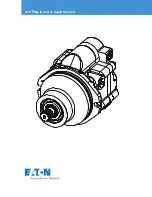
6 Troubleshooting
6.1 ECU alarms
The ECU generates alarms which are indicated in different ways depending on the equipment configuration:
• as four-digit code on a PIM
• as alarm text on a display
• as four-digit code on a dialog PC
The four-digit code consists of one letter and three figures:
• The letter encodes when the fault occurred the last time:
A = currently present
B = within the last operating hour
C = one to four operating hours ago
D = four to twelve operating hours ago
Alarms that occurred more than twelve hours ago are deleted automatically.
• The three figures encode the fault itself as listed in the table below.
Alarms can also be caused by defective sensors / actuators. If troubleshooting in accordance with the fol-
lowing table is not successful, contact Service to have the sensors / actuators checked and, if required, re-
placed.
Fault
code
Alarm text
Meaning
Task
004
L2 T-FUEL
Fuel temperature too high (2nd
limit)
Cool fuel tank.
005
L1 T-CHARGE AIR
Charge-air temperature too
high (1st limit)
Reduce power.
006
L2 T-CHARGE AIR
Charge-air temperature too
high (2nd limit)
Reduce power.
009
L1 T-INTERCOOL-
ER
Charge-air coolant temperature
too high (1st limit)
Reduce power.
015
L1 P-LUBE OIL
Lube-oil pressure too low (1st
limit)
Check engine-oil level and top up, if re-
quired (→ Page 192);
MS150031/06E 2016-010
| Troubleshooting | 121
TIM-ID: 0000003157 - 001
















































